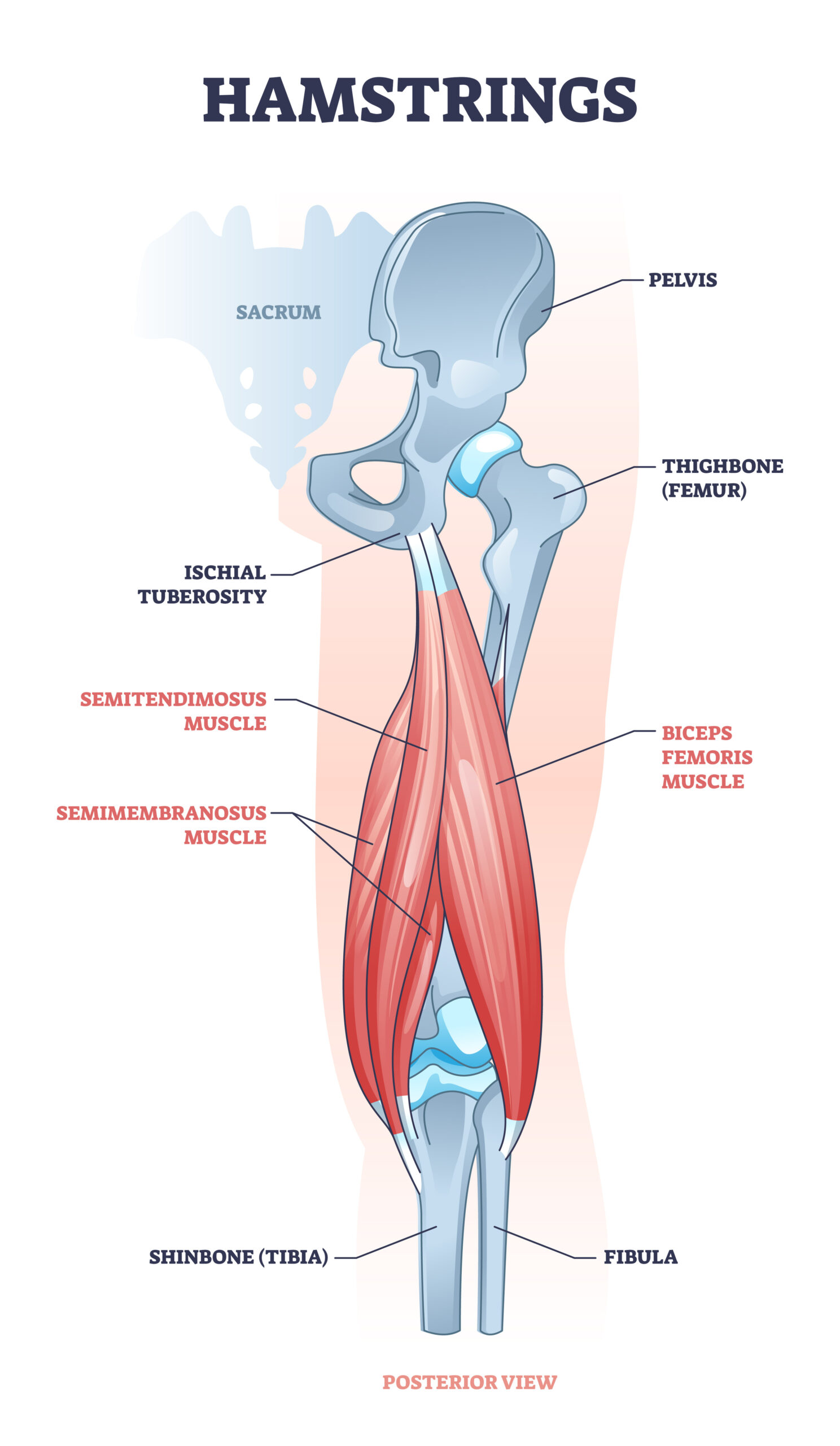
What is a hamstring injury?
Hamstring injury is a tear or strain in one of the 3 muscles at the back of your thigh. Hamstring injuries are common in athletes, especially runners, footballers, and dancers, but they can happen to anyone during sudden movement or overstretching.
Symptoms of an MCL tear include:
Typical symptoms of a hamstring injury include:
-
Sudden, sharp pain in the back of the thigh
-
A popping or snapping sensation at the time of injury
-
Swelling and bruising in the thigh or behind the knee
-
Muscle weakness or tightness
-
Difficulty walking, running, or bending the knee
- Difficulty in sitting on your buttock due to pain
In severe cases, you may notice a visible dent or lump in the muscle
Diagnosing a Hamstring Injury
If you suspect a hamstring tear or strain, seek medical attention. Diagnosis involves:
-
Physical examination to assess pain, swelling, and muscle strength
-
MRI or ultrasound scan to determine the extent of the injury and check for complete tendon tears
Treatment for Hamstring Injuries
Treatment depends on the severity of the injury and whether it’s a partial or complete tear.
Non-Surgical Treatment (For Most Hamstring Strains)
-
Rest and avoid high-impact activity
-
Ice therapy (15–20 minutes every few hours for the first 48–72 hours)
-
Compression and elevation to reduce swelling
-
Pain relief using paracetamol or anti-inflammatory medications
-
Physiotherapy to restore flexibility, strength, and prevent re-injury
Surgical Treatment for Severe Hamstring Tears
Surgery may be recommended for:
-
Complete hamstring ruptures
-
Tendon avulsion (when the tendon pulls off the bone)
-
Chronic hamstring injuries not improving with conservative care
- High grade intramuscular biceps tendon tear in high level athlete to minimise risk of re-injury
Surgical hamstring repair involves reattaching the torn muscle or tendon, followed by a structured rehabilitation program.










